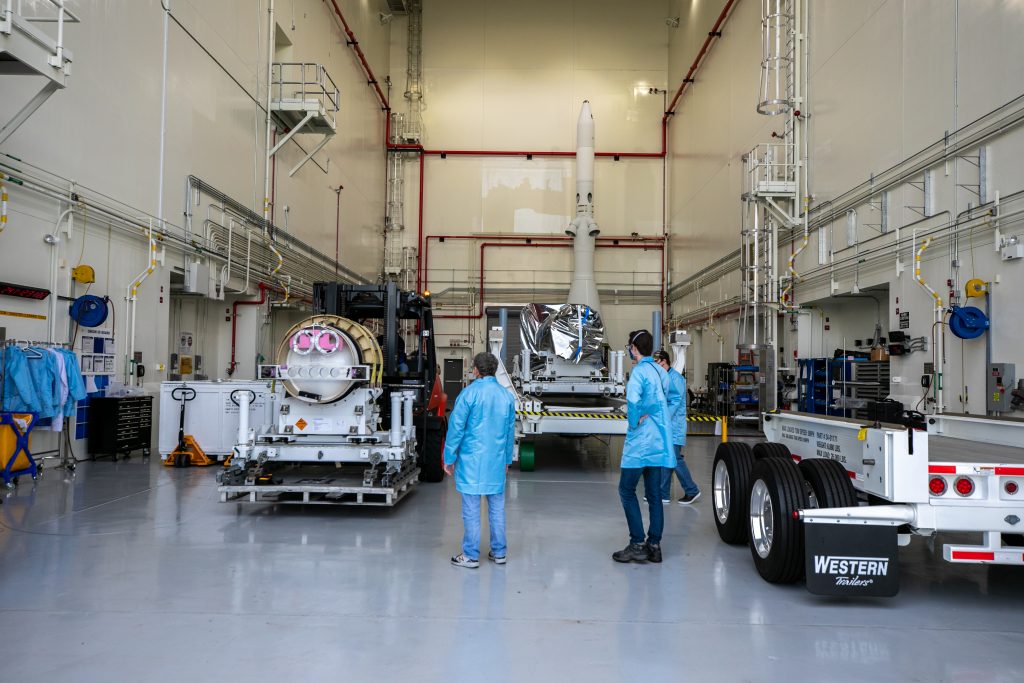
The last of three motors required to assemble the Launch Abort System for NASA’s Artemis II mission–the first crewed mission of the Orion spacecraft–arrived at Kennedy Space Center in Florida on August 28. The attitude control motor (ACM) was delivered by truck from Northrop Grumman’s manufacturing facility in Maryland, to the Launch Abort System Facility (LASF) at Kennedy.
During launch of Orion atop the agency’s Space Launch System rocket, the LAS motors work together to separate the spacecraft from the rocket in the unlikely event of an emergency during launch. The LAS includes three motors – the launch abort motor, the jettison motor, and the attitude control motor—that once activated, will steer the spacecraft carrying the astronauts to safety. The launch abort and attitude control motors were manufactured by Northrop Grumman; the jettison motor was manufactured by Aerojet Rocketdyne.
The ACM operates to keep Orion’s crew module on a controlled flight path in the event it needs to jettison and steer away from the rocket. It then reorients the crew module for parachute deployment and landing. The motor consists of a solid propellant gas generator, with eight proportional valves equally spaced around the outside of the 32-inch diameter motor. Together, the valves can exert up to 7,000 pounds of steering force to the vehicle in any direction upon command from the crew module.
Inside the LASF, the motor will be placed on a special trailer for future integration with the rest of the LAS elements. It will remain in the LASF midbay, where the Artemis I LAS is being integrated with its designated crew and service module for its mission next year.
Artemis II is the first crewed flight in a series of increasingly complex missions to the Moon that will lay the foundation for exploration of Mars and beyond. Artemis II will confirm all of the Orion spacecraft’s systems operate as designed in the actual environment of deep space with astronauts aboard. As part of the Artemis program, NASA will send the first woman and next man to the Moon in 2024.
